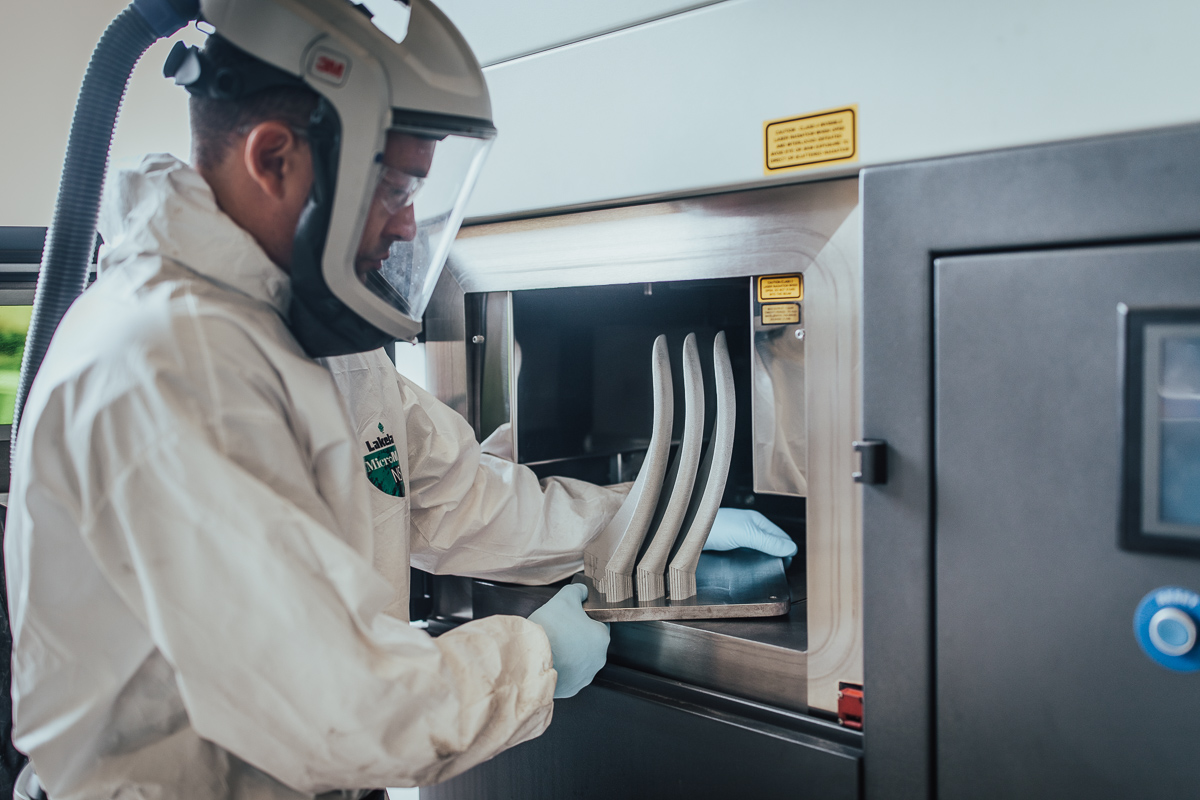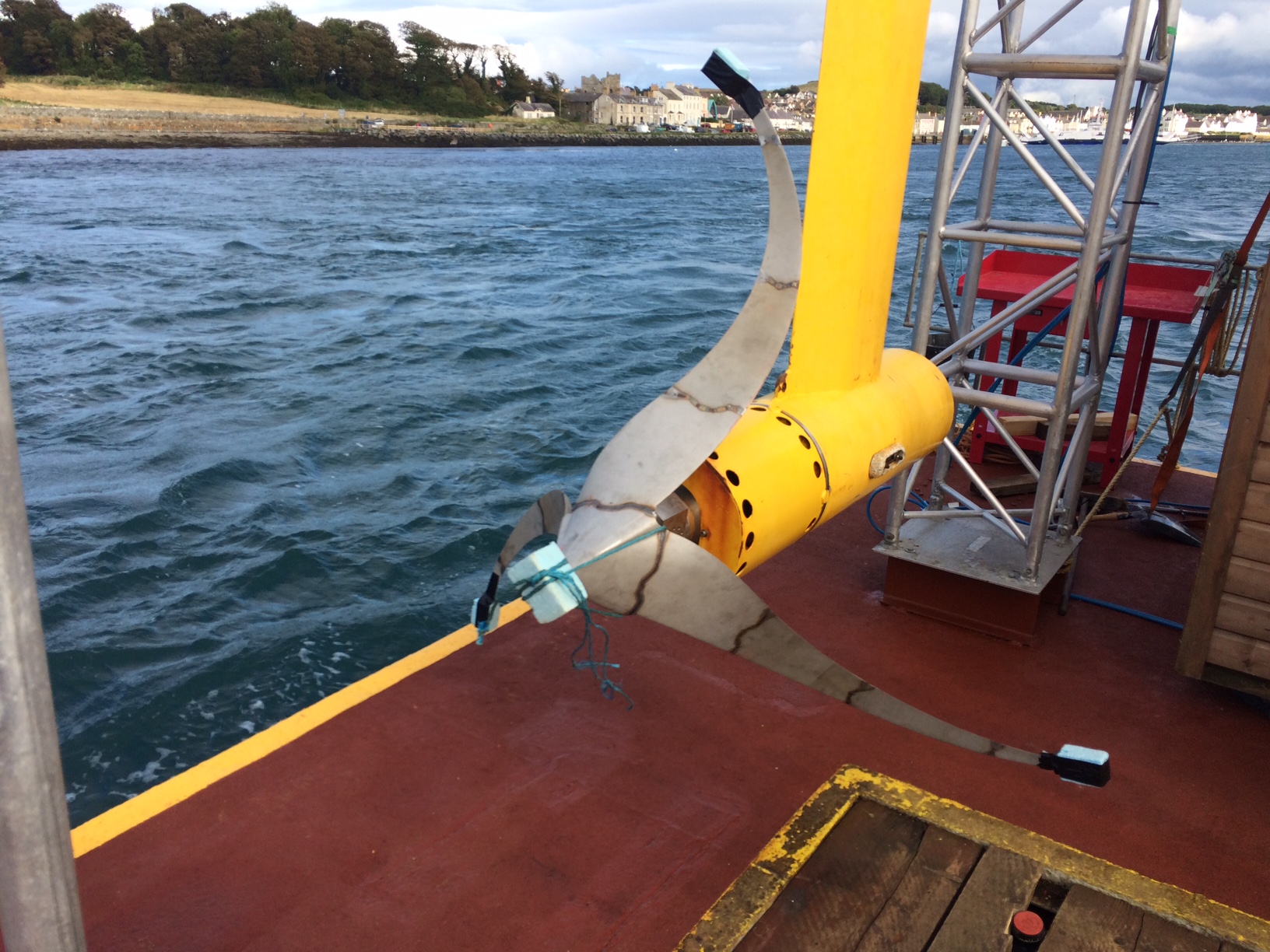British engineering firm and metal 3D printer manufacturer Renishaw has announced the production of two ocean turbine parts using additive manufacturing in partnership with the Nova Scotia Community College (NSCC) in Canada. The components were manufactured for industrial design firm Biome Renewables, which specializes in designing wind turbines.
Using metal additive manufacturing technology, Renishaw helped to manufacture a PowerCone retrofit, designed to co-rotate with the turbine’s rotor, and curved propellers to reduce drag. The advantages offered by metal additive manufacturing meant that the cost to produce the parts was reduced by 80 percent compared to traditional techniques. Additionally, the two turbine components required a total of two months for development: “Additive manufacturing allowed us to produce the final parts in two months, which would be unthinkable using traditional methods,” explained Mark Kirby, Additive Manufacturing Business Manager at Renishaw Canada.
“The ocean turbine project was not only a great opportunity for us to work with one of our many Canadian customers, it was a chance for us to see how metal AM can improve the efficiency of renewable sources.”

Biome Renewables seeks metal 3D printing assistance
Founded in 2015, Biome Renewables aims to create solutions for the world’s renewable energy problems by leveraging a biomimetic design philosophy. The company is the inventor of the PowerCone, a wind turbine retrofit that channels incoming wind onto the blades to address root leakage, a problem that draws potential power away from the blades and generates turbulence. PowerCone addresses the issues of root leakage, resulting in more power, said to potentially increase annual energy production by up to 13 percent.
Biome Renewables made the decision to start designing solutions for tidal wave energy as well. As such, the firm approached the NSCC, as the college specializes in ocean technology, and houses an engineering research facility that builds prototypes for different industries. Biome Renewables learned that in order to adapt its wind turbine designs for tidal environments, it had to replace the plastic material that it was currently using. The company, therefore, opted to leverage metal additive manufacturing in order to make its ocean turbine parts stronger.
Biome Renewables approached Renishaw for technical assistance in using metal additive manufacturing. Renishaw holds specialist knowledge in the technology, which Biome Renewables hoped to learn more about in order to build the turbines. The British engineering firm’s metal 3D printing expertise has been leveraged for a number of different applications. For example, Renishaw recently announced a milestone in a medical study seeking to help sufferers with Parkinson’s disease. The study looks at a patented intraparenchymal drug delivery device that uses 3D printed titanium. Earlier in 2020 Renishaw also signed an MoU with multinational aerospace company BAE Systems to improve manufacturing processes for combat aircraft systems. Additionally, the company’s RenAM 500M 3D printer was used to help develop a new track bike for the Great Britain Cycling Team by producing prototype and end-use parts in metal.

Reducing costs of turbine production by 80 percent
After being approached by Biome Renewables, Renishaw assisted in designing two parts for the firm using metal additive manufacturing. The first was a PowerCone retrofit part for ocean turbines, and the second was a set of propellers with a curved design to reduce drag when the blades turn in the water. These parts were used by Biome Renewables to initially build a prototype turbine, which was tested at Strangford Loch in Northern Ireland. Both the PowerCone and the propeller blades were then added to an existing turbine for further testing. With the metal 3D printed modifications, the tests showed that the turbine produced significant levels of power over a wide range of tidal velocities when submerged in water.
“Tidal turbine energy is one of many growing renewable energy markets and it was really exciting to be involved in a project like this,” continued Kirby. “While people often think of metal AM as an expensive venture, the technology allowed Biome to reduce the cost of building the turbine by 80 per cent. We look forward to working on more projects like this and seeing how other companies benefit from metal AM.”
3D printing in the field of wind turbines is also being explored by 3D printed concrete startup RCAM Technologies and IT service provider Accucode, Inc. Both companies are working together to develop large-scale, 3D printed concrete structures supporting offshore wind turbines.
The nominations for the 2020 3D Printing Industry Awards are now open. Who do you think should make the shortlists for this year’s show? Have your say now.
Subscribe to the 3D Printing Industry newsletter for the latest news in additive manufacturing. You can also stay connected by following us on Twitter and liking us on Facebook.
Looking for a career in additive manufacturing? Visit 3D Printing Jobs for a selection of roles in the industry.
Featured image shows metal 3D printed propellers. Photo via Renishaw.


